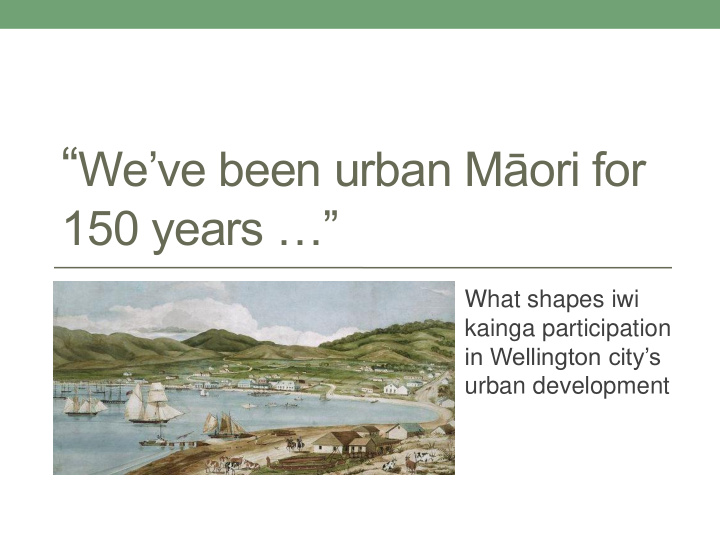



“ We’ve been urban Māori for 150 years …” What shapes iwi kainga participation in Wellington city’s urban development
Wellington iwi kainga after 1840 • Loss of 99% of land – little/no compensation • Destruction of/removal from kainga - no Wellington kainga/marae left • Māori driven out – to Hutt Valley, Taranaki 1950s onward • Inward Māori migration to Wellington • Iwi kainga now minority of Māori 1980s onwards • Assertion of identity and place • Legislative and social changes – some recognition of status
Iwi kainga in Wellington in 2016 • 7% of 7% - iwi kainga a very small proportion of Wellington Māori • Small human resource base to draw on – especially kaumatua • ‘Iwi authority’ is Port Nicholson Block Settlement Trust • set up 2008 to manage Treaty settlement package • has broader scope than Wellington city • PNBST and Wellington Tenths Māori land trust have land holdings across city but hard to consolidate them • Focus on land development – income is harder to generate
Areas of potential Māori participation in Wellington’s urban development • Governance (eg local government amalgamation) • Community – level governance • Urban form – public spaces, community spaces, housing • City design – visibility asserting Māori history and identity • Economic development – tourism, Māori business • Educating next generation of Wellingtonians – eg work with schools
‘Becoming visible’ – shared theme of interviews • Understanding our own history and place in Wellington – ‘telling our stories to ourselves’ • Developing a sense of tūrangawaewae • Developing collective identity/identities – as a basis for collective action • Asserting ourselves as ‘urban Māori’
Challenges for Wellington’s iwi kainga in being part of urban development • Low visibility – as iwi kainga with a role and place in Wellington • Developing knowledge, skills and confidence • Developing the human resource base to prepare for future participation • Representative organisations are new, in development • Land development – how to generate income • Legislation, regulation and policy struggles with these realities Whakahoki
Recommend
More recommend